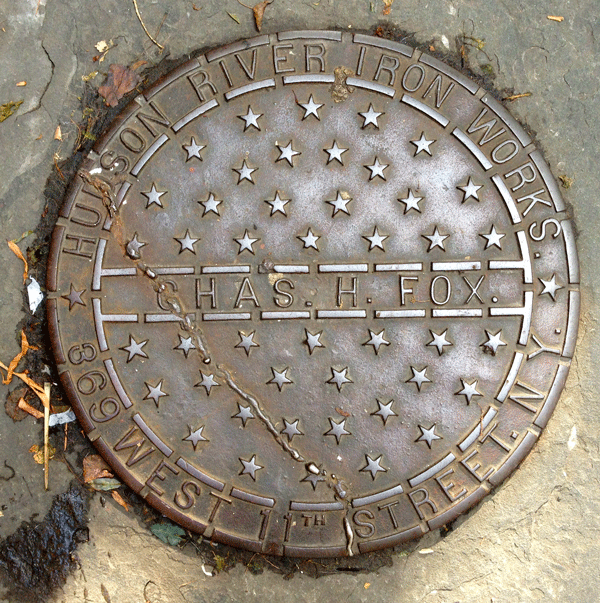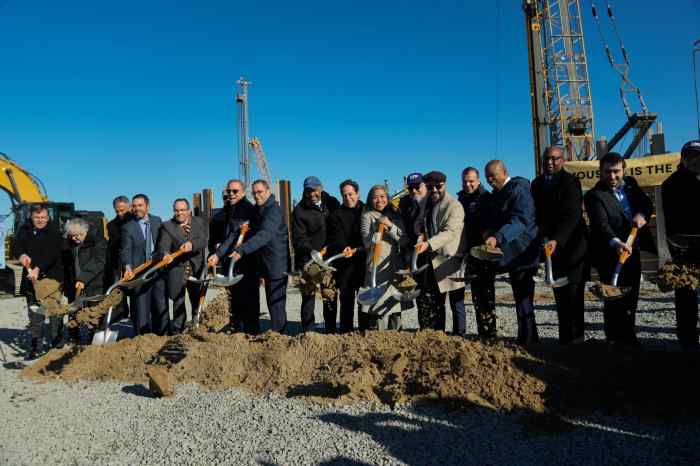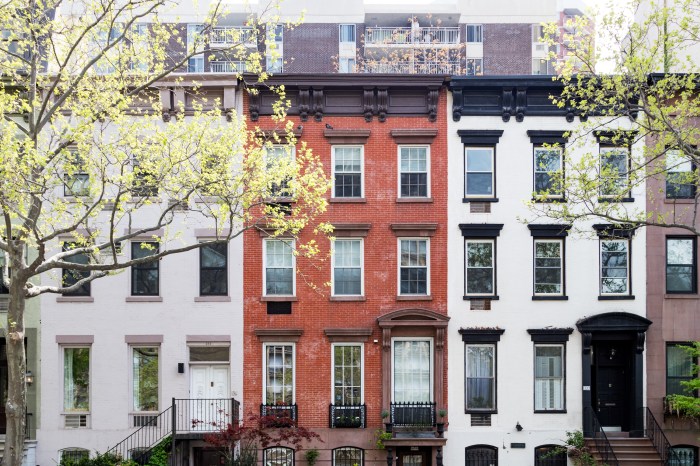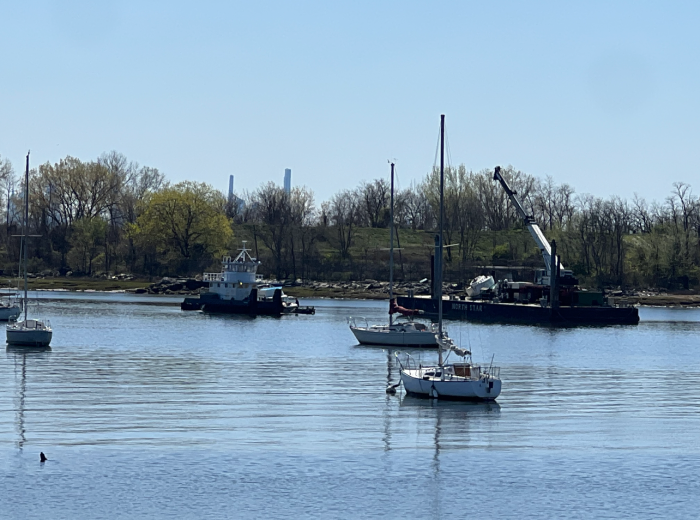BY OTIS KIDWELL BURGER | On Sat., March 15, a couple perhaps from around Westbeth was seen walking down Bethune St. and taking photographs. The man, tall and fiftyish, kicked the coal chute cover on the sidewalk in front of 27 Bethune St. and found that it was loose. About two hours later, around 2 p.m., another tall man was seen taking an orange D.O.T. cone from a car and placing it beside the fence in front of No. 27, then driving off. The witnesses — including myself — ran over and found ourselves staring at a 15-inch-wide round hole in the sidewalk.
A police car happened by. They thought D.O.T. had taken the coal chute cover for repairs. Then five large firemen came and pushed a heavy planter over the hole. Then E.P.A. came, but the hole was now blocked.
A policeman strode about my living room shouting into a cell phone, “No, no, not a manhole cover.”
A family friend said, “These sell for $2,000 to collectors. There is a black market in historic ironwork.” (And, indeed, in 1960 two ornamental cast-iron pillars had been stolen from our front stairs.)
The police finally decided to treat this as a crime.
It was a handsome cover, like a small manhole cover, cast iron with “Hudson River Iron Works” and stars on it. It came with the house when we bought it in 1959, but it was no longer in use; the old coal-burning furnace had already been converted to oil.
In 1821, when my great-great-grandfather William Henry Willcox was born on Cedar St. in New York City, central heating “was far in the future.” He wrote his memoirs when he was in his 80s, describing life in the city. Heating came from fireplaces, and “cooking was done in a fireplace provided with a great crane and hooks…holding pots and kettles over a wood fire.”
But “father was somewhat of a progressive,” and soon installed a coal-burning cast-iron range instead, and later a “Nott’s stove” in the hall near the parlor. But “its promise quite out ran its performance.”

The parlor, dining room and bedrooms had fireplaces, but the attic rooms, where the boys and servants slept, were “as frigid as the streets,” in winters so cold the Hudson froze from shore to shore.
The kitchen was the warmest room in the house.
One hundred years later, when I was born, my grandmother’s Staten Island house did have a coal-burning furnace, but her cooks still used a coal-burning cast-iron range. Coal was kept in a bin in the cellar. It was impressively black and beautiful. Magic stones that burned!
No.’s 27 and 29 Bethune St. were built in 1836 as an “Uptown Speculation.” They stand on landfill, where there was once a farm belonging to Joanna and Divvie Bethune. No. 27 has a big coal storage space beneath the coal chute which opens on the sidewalk. Our coal-burning furnace had been converted to oil, but one neighbor on Bethune St. still remembers coal rattling down the chute of her family’s house in the ’30s and the problems of disposing of the ash.
The house next door, No. 25, never did have central heating and was renovated with electric heat in each apartment. Its coal chute cover was stolen 20 years ago, and like many others, the hole was cemented over. I think my cover was the last on the block.
Once, of course, these sidewalks were brightened by many coal chute covers, in many interesting designs. …. Coal-burning furnaces lingered here and there for a while. In 1959, a store on Barrow St. still sold coal, ice and kerosene. The West Village was a waterfront area, with rooming houses and seamen’s bars. The rag-and-bone man rode a horse-drawn cart with a bell. A scissors grinder proclaimed his services as he walked.
“White Wings” sanitation men pushed carts full of brush brooms and a couple of garbage cans. The Meat Market had street-side barrels full of entrails and calf heads in the early morning. You could order fresh milk delivered to your door. A stable for police horses was nearby, and a riding ring with ponies was on Charles St. It was a real Village.
And you could buy a house for $30,000.
These streets are no longer clogged with horse manure and dirty with coal and coal ash. And our houses are warm, as my “progressive” great-great-grandfather apparently hoped.
But the mess hasn’t gone away. It has just gone elsewhere.
Mountaintops are blown off. Streams are smothered in coal ash. Skies are blackened. Fracking poisons the land and water.
I like to think my “progressive” great-great-grandfather would be pleased that at least some of his descendants — my older daughter, Neall, and her family — have turned from coal to solar power for all their electricity.
As for the thieves — what use is a cast-iron coal chute cover bereft of its function and its history? Put it back!

















